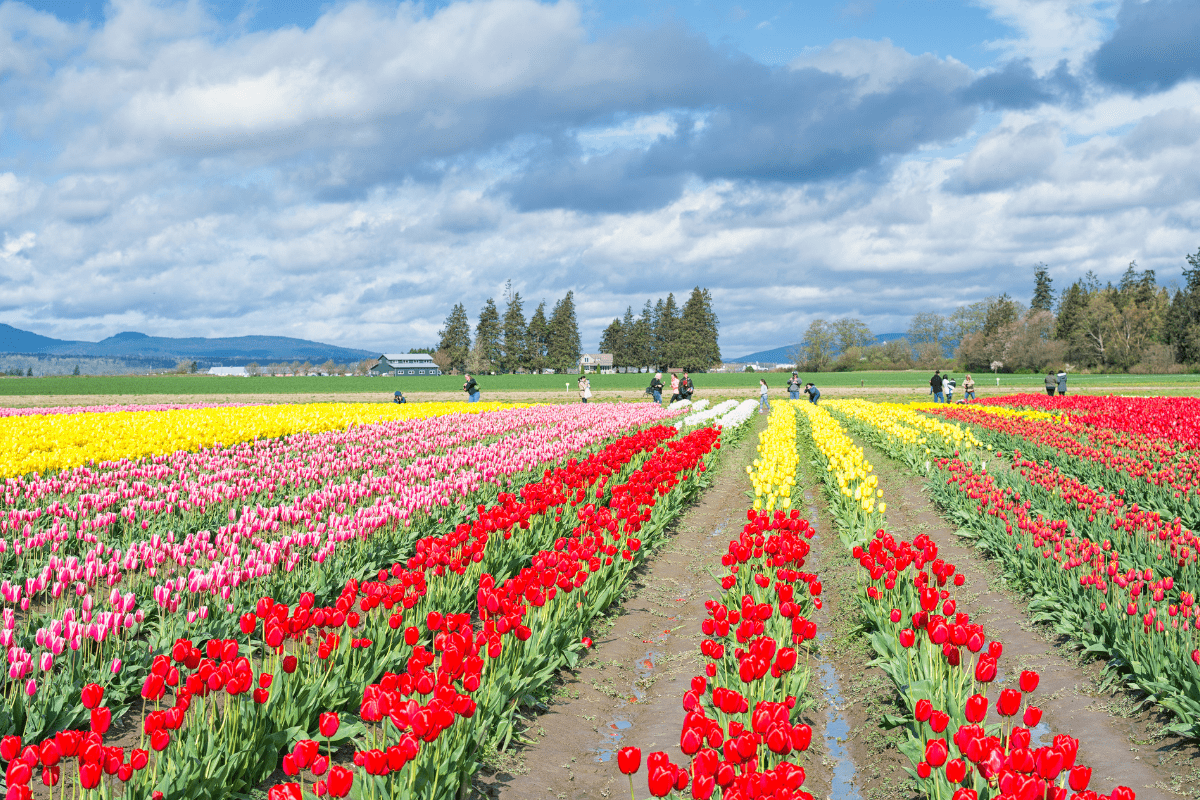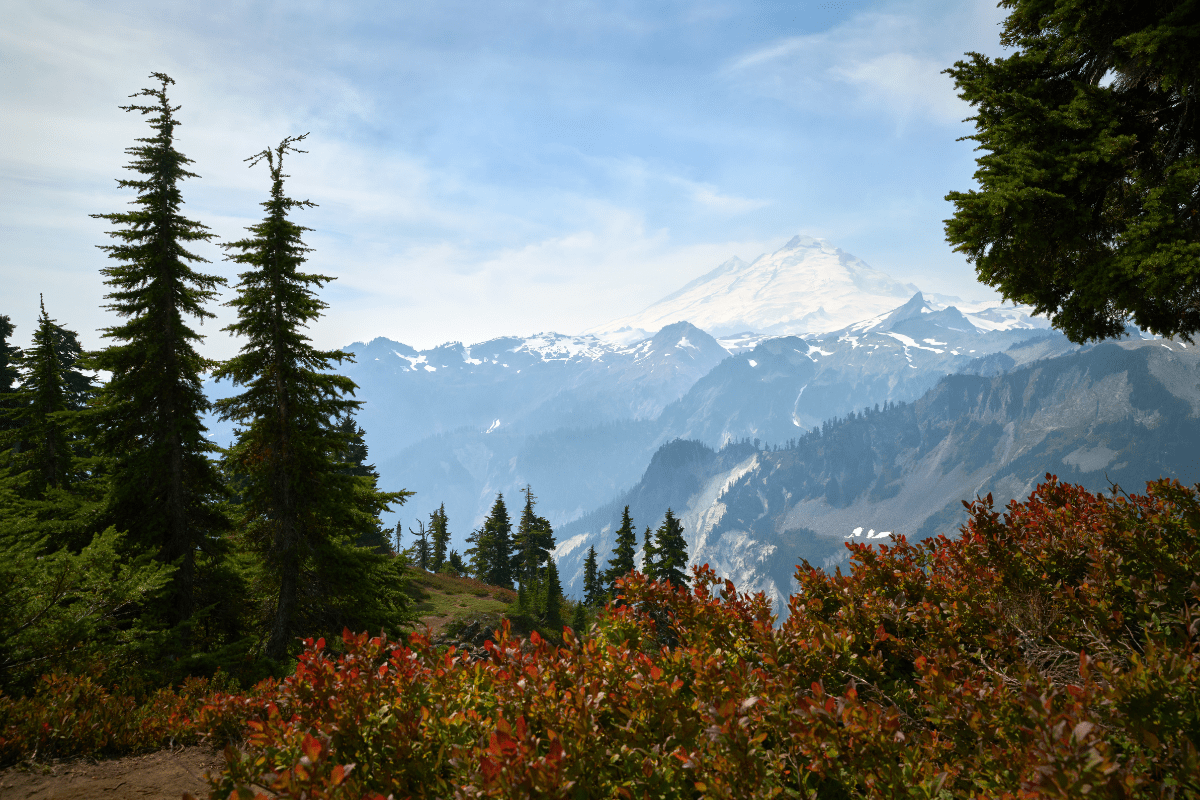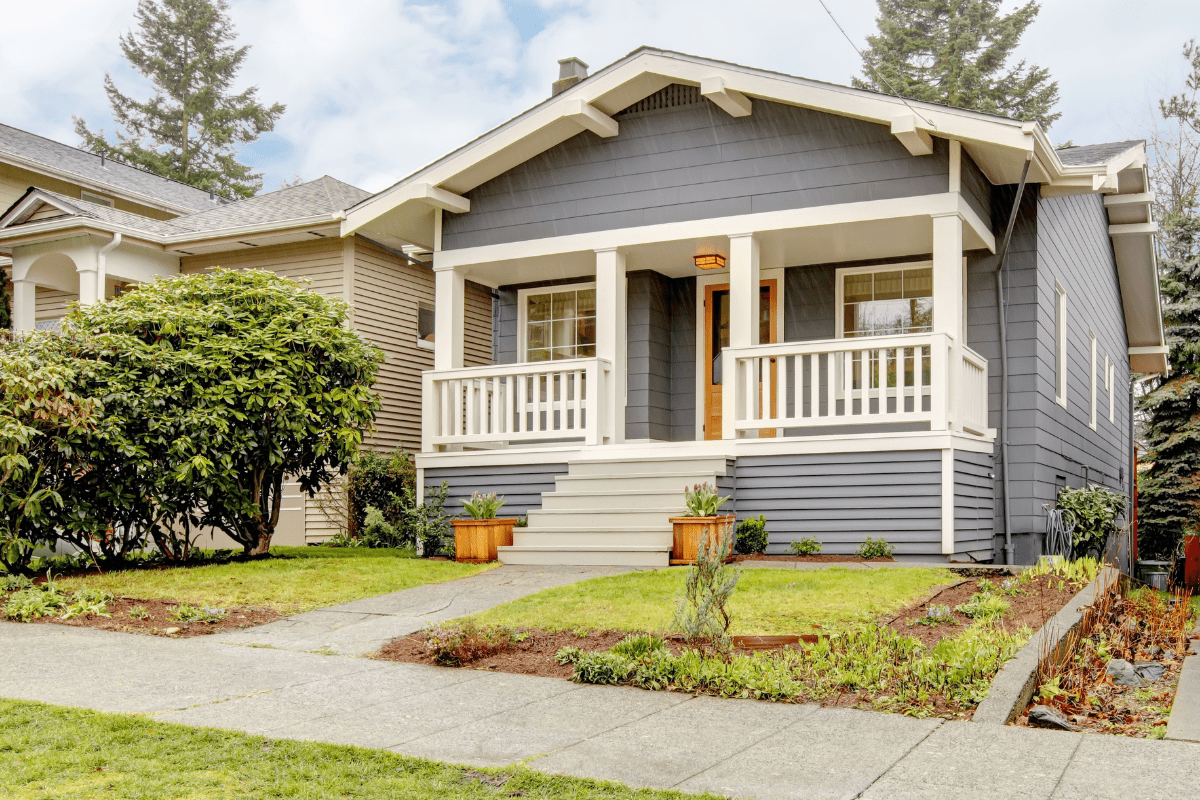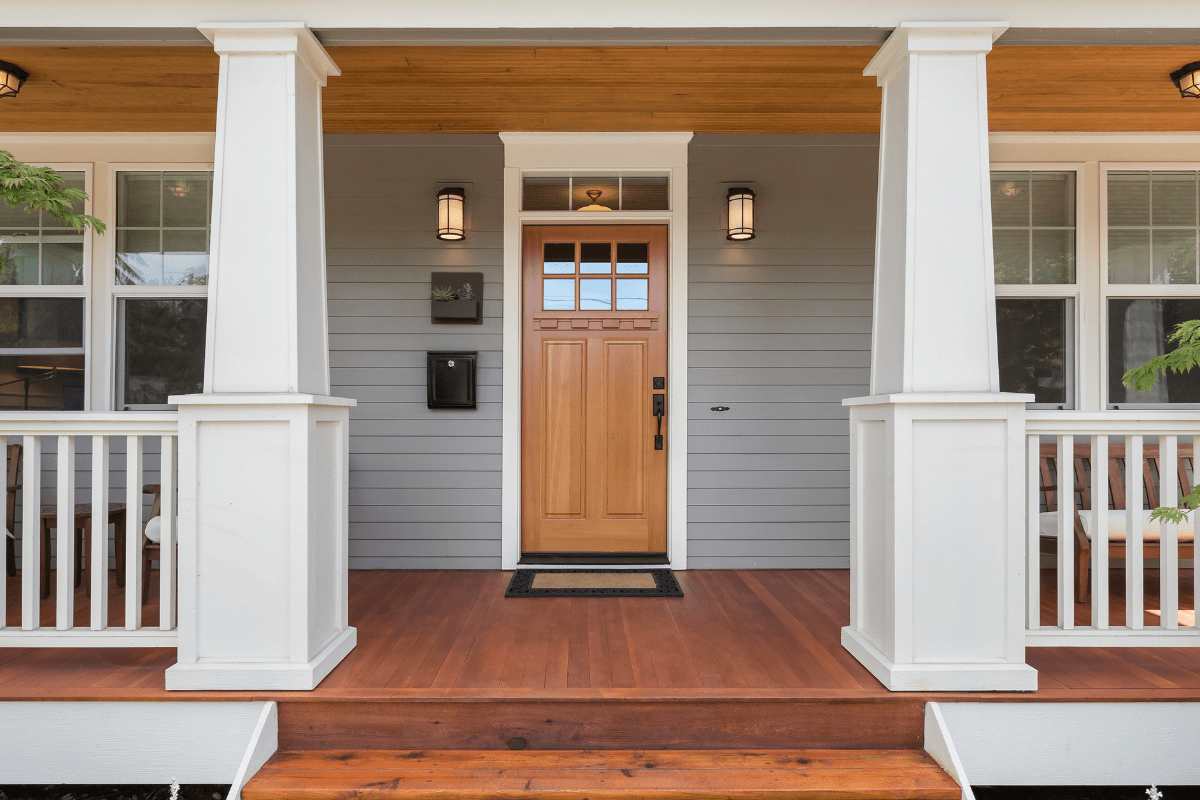Washington state pulls off something most destinations can't: being four completely different places depending on when you show up. Trust me, visiting Seattle in July versus December feels like teleporting between parallel universes (one significantly soggier than the other).
Fall wins the seasonal lottery
After spending way too much time analyzing weather patterns and hotel prices, I'm calling it: fall is Washington's golden child. September through November delivers that perfect storm of decent weather, manageable crowds, and prices that won't require selling a kidney.
Why everyone should visit Washington in fall
September basically cosplays as summer with 70°F temperatures and minimal rain, but here's the kicker: tourist numbers drop 50-60% after Labor Day. Hotels suddenly remember what competitive pricing means, slashing rates 15-25% from summer peaks. You get Instagram-worthy weather without fighting 47 other people for that perfect Pike Place Market shot.
The math here is simple. Summer weather minus summer crowds equals travel nirvana. Plus, fall brings harvest season to wine country, turning already gorgeous vineyards into something that'll make your California friends jealous.
Seattle shines brightest in September
Forget what you've heard about Seattle rain because September laughs in the face of stereotypes. The city maintains its summer glow with temperatures hovering around 70°F in September before gradually cooling to the 50s by November.
Pike Place Market transforms back into an actual market rather than a tourist obstacle course. You can finally experience the famous fish throwing without dodging selfie sticks. The Washington Park Arboretum puts on its annual color show, creating a photographer's playground that rivals New England (yeah, I said it).
Coffee shops regain their neighborhood vibe as summer tourists flee, meaning you can actually sit down at that trendy Capitol Hill cafe. Museums offer breathing room to appreciate art without someone's backpack constantly bumping you. Even the Space Needle lines become reasonable, though "reasonable" for Seattle's most famous attraction still means planning ahead.
Leavenworth's autumn transformation deserves the hype
This Bavarian-themed town goes absolutely bonkers for fall, and honestly, they've earned the right. Oktoberfest runs three weekends in October, earning recognition from Outside Magazine as one of America's top 13 outdoor festivals. Picture authentic German beer gardens, a 62-foot Ferris wheel, and enough bratwurst to feed a small army.
The Autumn Leaf Festival in late September adds another layer of festivity, but the real show happens naturally. Western Larch trees turn the surrounding mountains gold, creating a backdrop that makes the town's Alpine architecture feel genuinely transported from Europe. Fair warning though: temperatures range from 25-40°F, so pack layers unless hypothermia sounds fun.
Pro tip that'll save your vacation: book accommodations six months ahead for festival weekends. I learned this the hard way when my procrastination led to a lovely evening sleeping in my car (0/10, do not recommend).
Wine country hits peak awesome during harvest
Eastern Washington's wine regions basically throw a two-month party from September through October. Walla Walla's 120+ wineries offer crush pad tours during harvest season, giving you behind-the-scenes access that summer visitors miss entirely.
Yakima Valley joins the celebration with "Catch the Crush" in mid-October. Yes, you can actually stomp grapes like a Victorian winemaker, though modern hygiene standards mean your feet won't end up in anyone's Merlot. Live music and harvest parties create an atmosphere that beats sterile summer tasting rooms by miles.
The cherry on top? Shoulder-season hotel rates throughout wine country. You're getting peak experience at off-peak prices, which leaves more budget for important things like buying wine to ship home.
Eastern Washington generally shows off during fall:
- Lake Chelan maintains summer vibes through October
- Spokane becomes base camp for fall hiking
- Apple orchards open for picking adventures
- Mountain trails showcase golden larch displays
Summer brings reliable sunshine (and everyone else)
June through August delivers what Washington's tourism board promises in those glossy brochures. Western Washington enjoys 70-77°F temperatures while Eastern Washington cranks up the heat to the 80s and 90s. July takes the crown as driest month, with Seattle receiving a mere 0.7 inches of rain. We're talking 15.9 hours of daylight at summer's peak, giving you enough time to hit three breweries and still catch the sunset.
Seattle summer requires strategic planning
Here's the reality check: 40 million visitors descend on Seattle annually, with most cramming into summer months. Hotel rates spike 25-40% above off-season levels, and popular restaurants suddenly require reservations made during the previous ice age.
Major events pack the calendar:
- Seafair dominates July-August
- Capitol Hill Block Party brings music mayhem
- Neighborhood festivals every weekend
- Outdoor concerts at every venue
Want to take a ferry to the San Juan Islands? Book vehicle reservations two weeks ahead unless you enjoy disappointment. Planning to visit Mount Rainier? Set that alarm for dawn because Paradise parking fills by 7 AM on weekends. I once arrived at 9 AM thinking I was early. Spoiler alert: I wasn't.
The upside? Seattle summers are genuinely magical when you plan properly. Sunset kayaking on Lake Union, rooftop bars with mountain views, and outdoor movies in parks create memories worth fighting crowds for. Just embrace the chaos and remember everyone else is sweating through the same tourist gauntlet.
Eastern Washington becomes an outdoor playground
Lake Chelan emerges as Eastern Washington's summer superstar, boasting 300+ days of annual sunshine that would make Phoenix jealous. Forty local wineries dot the landscape, though good luck focusing on wine notes when you're distracted by lake views. Slidewaters Water Park provides family fun, while international surfing competitions at the river surf breaks prove Eastern Washington contains more surprises than you'd expect.
Spokane positions itself as the practical basecamp for summer adventures. Five ski resorts within 90 minutes transform into hiking destinations, offering alpine experiences without coastal crowds. Green Bluff farms open for berry picking, creating wholesome family activities that'll make you consider moving here (until you remember winter exists).
Bellingham deserves more credit as summer destination:
- Gateway to Mount Baker wilderness
- Bellingham Festival of Music
- Farmers market reaches peak awesome
- Chuckanut Drive scenic coastal route
Meanwhile, Leavenworth trades lederhosen for hiking boots. The Colchuck Lake trail (8 miles, 2,000 feet elevation gain) rewards early risers with alpine lake views that'll ruin all other hikes for you. The Leavenworth Summer Theater presents "The Sound of Music" under actual stars from July through August, though the hills are alive with the sound of tourist chatter.
Spring awakens nature (and your allergies)
March through May creates a botanical transformation that'll make you forgive Washington for its winter crimes. Western Washington gradually warms from 50.5°F in March to 64.8°F in May, while rainfall decreases from 3.07 to 1.57 inches monthly. Translation: pack layers and keep that rain jacket handy.
Skagit Valley Tulip Festival dominates April
This isn't some cute neighborhood garden tour. We're talking millions of blooms creating color explosions visible from space (probably). The festival runs throughout April with admission ranging $15-30 at participating farms like RoozenGaarde and Tulip Town.
Photography tips from someone who's made every mistake:
- Weekday mornings beat weekend chaos
- Sunrise light makes colors pop
- Wear boots (mud is guaranteed)
- Bring cash for farm stands
The festival draws serious crowds, but scattered farms mean you can usually find peaceful spots. Just prepare for traffic that'll test your patience and bladder capacity.
Cities bloom with spring character
Seattle's spring highlight arrives when cherry blossoms peak at the University of Washington campus in early April. This free spectacle rivals D.C.'s famous display, minus the political overtones. Pike Place Market vendors return with spring flowers, and hiking trails start shedding snow, though "spring" in the Cascades means anything from sunshine to surprise blizzards.
Leavenworth celebrates Maifest throughout May with traditional Bavarian maypole dancing and the International Alphorn Festival. Crowds remain manageable compared to summer insanity, making this an ideal time for Bavarian immersion without the full tourist assault.
Port Townsend wins the spring lottery thanks to the Olympic rain shadow effect, enjoying more sunshine than Seattle while rhododendrons frame its Victorian architecture. The town's Rhododendron Festival creates postcard scenes, though calling it a "festival" might be generous. It's more like the town agreeing flowers are nice.
Wine regions throughout Eastern Washington host spring release weekends in April, pouring new vintages while accommodation prices remain 20-30% below summer rates. Walla Walla particularly shines, with wineries eager to show off after winter hibernation.
Winter divides the state in half
December through February reveals Washington's split personality disorder. Western Washington settles into its reputation with 35-47°F temperatures and 5+ inches of December rain. Eastern Washington embraces winter sports with enthusiasm that borders on concerning. Hotel rates plummet 30-40% except in Leavenworth, which becomes Christmas Town USA.
Leavenworth's holiday magic justifies the hype
This Bavarian village doesn't just decorate for Christmas; it becomes Christmas. Over 500,000 LED lights transform downtown from Thanksgiving through February, creating a spectacle that makes Hallmark movies look understated.
January's Winter Karneval earned recognition from TimeOut as one of America's top three winter carnivals. Ice carving competitions, traditional German Fasching celebrations, and enough mulled wine to forget the 25-40°F temperatures create genuine magic. Book six months ahead for holiday weekends unless you enjoy paying $500 for a motel room.
Regional winter experiences vary wildly
Western Washington embraces its moody winter personality:
- Storm watching on Olympic Peninsula
- Seattle's thriving theater scene
- Cozy restaurant experiences
- Museum wandering without crowds
Eastern Washington becomes a winter sports paradise. Spokane serves as hub for five ski resorts within 90 minutes, while Mount Baker near Bellingham holds world records for snowfall. The Methow Valley maintains 120+ miles of groomed Nordic trails for cross-country skiing that'll exhaust you in the best way.
Critical winter planning information because nobody likes surprises involving mountain passes:
- North Cascades Highway closes November-April
- Chinook and Cayuse Passes close seasonally
- Stevens/Snoqualmie Pass require chains
- Wine tasting rooms reduce hours
Check WSDOT pass reports religiously unless you enjoy unexpected mountain adventures. Many wine tasting rooms in Yakima and Walla Walla reduce hours or close entirely, so calling ahead prevents disappointment and wasted gas.
Your Washington seasonal game plan
Let's cut through the fluff with practical advice:
Best overall month: September (weather, crowds, prices align perfectly)
Booking timeline:
- Leavenworth festivals: 6 months ahead
- Summer ferry reservations: 2 weeks ahead
- Seattle summer hotels: 2-3 months ahead
- Everything else: 1 month usually works
Budget seasons: November through March (excluding holidays)
Weather reality: Western Washington requires rain gear year-round. Eastern Washington swings between extremes. Pack accordingly or suffer accordingly.
Making your Washington choice
After drowning you in seasonal details, here's the truth: Washington delivers something special whenever you visit. Spring brings botanical drama and empty trails. Summer offers reliable sunshine and festival overload. Fall balances perfect weather with wine harvests and manageable crowds. Winter splits between coastal moodiness and mountain adventures.
My personal pick remains fall, specifically late September when summer's warmth lingers but crowds vanish. You get peak Washington without peak prices or peak tourist nonsense. But honestly? Any season beats not visiting at all. Just check those pass reports, book accommodations before procrastination bites you, and prepare for a state that refuses to be boring regardless of when you show up.





